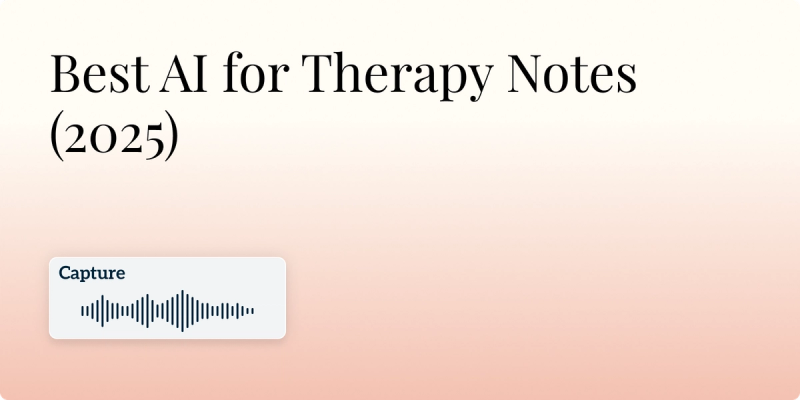
HIPAA, LLMs, and Data Privacy: What Every Clinician Should Know

What if the very tool you're using to improve efficiency is actually putting your practice at existential risk? Large Language Models (LLMs) are transforming industries, and healthcare is no exception. Their ability to understand and generate text offers incredible potential for clinical support. However, for healthcare providers, the use of public LLMs introduces data privacy and HIPAA violations that cannot be ignored.
Before you use AI for any task involving patient information, it is essential to understand the technical vulnerabilities of these systems and the legal framework designed to protect against them.
The Unseen Danger: Why Standard LLMs And PHI Dont Mix
At its core, a standard, public large language model is a powerful prediction engine, not a secure medical records system. Its design creates inherent risks for Protected Health Information (PHI). The primary dangers fall into two critical areas:
Data Becomes Part of the Model's Memory
- When you input text into a public LLM, that data can be used to retrain and improve the model. This means patient details are no longer just in your query; they can become a permanent part of the AI’s knowledge.
- This is a direct HIPAA violation, as it constitutes an unauthorized disclosure for the purpose of commercial model development without patient consent.
Lack of Confidentiality Through Human Review
- AI companies often employ human reviewers to analyze user interactions to improve accuracy and safety. Your prompts and queries are not necessarily confidential.
- If your prompt contains PHI, you are then disclosing a patient's sensitive health information to a third-party individual without a Business Associate Agreement in place.
Overall, using a public LLM for clinical tasks is like discussing a patient's case in a public elevator or sending their details via unsecured email; it fundamentally lacks the privacy and security safeguards required by law.
Digital Protective Measures: BAAs and HIPAA-Compliant AI
The path to using AI safely isn't to avoid the technology, but to use tools specifically engineered for a healthcare environment. HIPAA compliance for an AI scribe is not a feature; it is the foundational architecture of the system.
The Non-Negotiable Requirements For Any AI Tool That Handles PHI Include:
- A Signed Business Associate Agreement (BAA)
- This is a legal contract required by HIPAA between a healthcare provider and any vendor that handles PHI.
- Using any AI tool without a signed BAA is a HIPAA violation, even for testing.
- Strict Data Governance and Encryption
- All PHI must be encrypted both during transmission to the service (in transit) and while stored on its servers (at rest).
- The system must have strong access controls (secure login, two-step authentication) and detailed audit logs that track who accessed what data and when.
- A Guarantee of “No Data for Training”
- This is the critical differentiator between a compliant and non-compliant AI. A HIPAA-compliant AI scribe must contractually guarantee that your patient data will not be used to train, improve, or refine their general AI models. Your data remains yours alone.
A Practical Checklist for a Clinician
Before integrating any AI tool into your clinical workflow, use this checklist to ensure it meets basic privacy and security standards. If you cannot answer “yes” to all of these, the tool is not safe to use with patient information.
- Signed Business Associate Agreement (BAA): Has the vendor provided and signed a BAA specific to their AI tool? This is your legal foundation for compliance.
- Clear Data Usage Policy: Is there an explicit, written policy stating that your data is not used to train or improve the vendor's general AI models?
- End-to-End Encryption: Does the vendor use strong encryption (like HIPAA-compliant cloud hosting on AWS, Google Cloud, or Azure) to protect data both in transit and at rest?
- Access Controls and Audit Logs: Does the tool have user authentication, and does it maintain detailed logs of who accessed data and when?
- Purpose-Built for Healthcare: For clinical tasks, is the tool specifically designed for medical contexts (e.g., understands medical terminology, integrates with EHRs)?
Conclusion
The emergence of AI in healthcare is not a passing trend but a shift in how clinicians practice medicine. The responsibility lies with clinicians to adopt these powerful tools not just effectively, but ethically and safely. By moving beyond public LLMs and insisting on solutions built with HIPAA compliance as their core principle, clinicians can harness the efficiency and power of AI without compromising their duty to patient privacy. This mindful approach is the cornerstone of using AI safely, where technology enhances care without creating new risks.
Frequently Asked Questions
ABOUT THE AUTHOR
Dr. Danni Steimberg
Licensed Medical Doctor
Reduce burnout,
improve patient care.
Join thousands of clinicians already using AI to become more efficient.

Psychotherapy Notes: Best Practices & HIPAA Compliance
Discover how to create, store, and protect psychotherapy notes under HIPAA. Learn best practices, legal tips, and tech safeguards from Twofold’s experts.

Do You Need A BAA For Your AI Notes Tool? (Probably Yes)
Using AI for patient notes? Learn why a Business Associate Agreement is essential for HIPAA.

Best AI for Therapy Notes (October 2025)
Discover the best AI for therapy notes in 2025: compare top tools, pricing, HIPAA safeguards, and EHR workflows to cut documentation time and boost accuracy.

